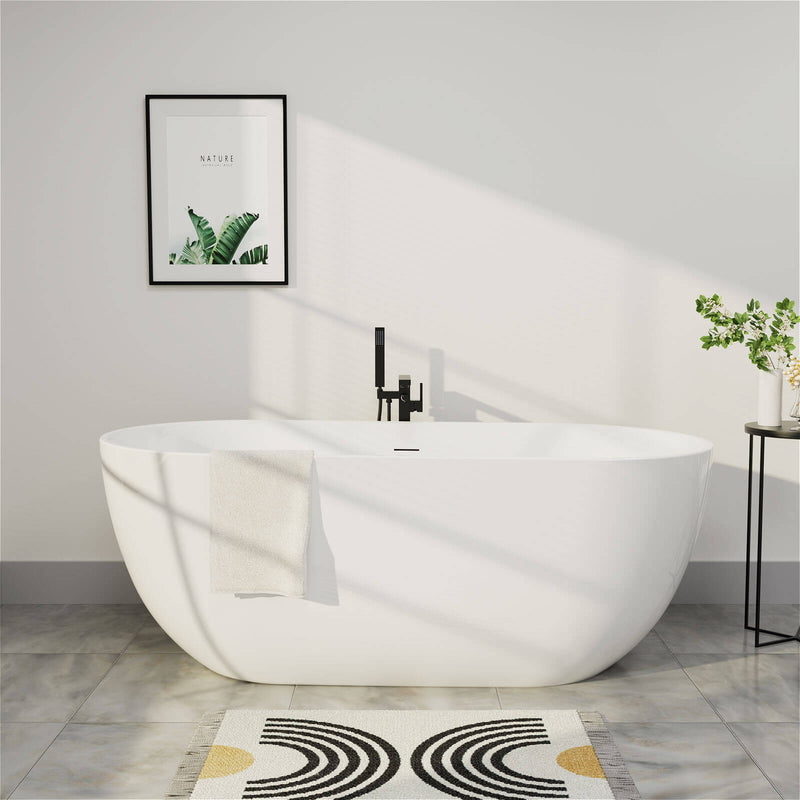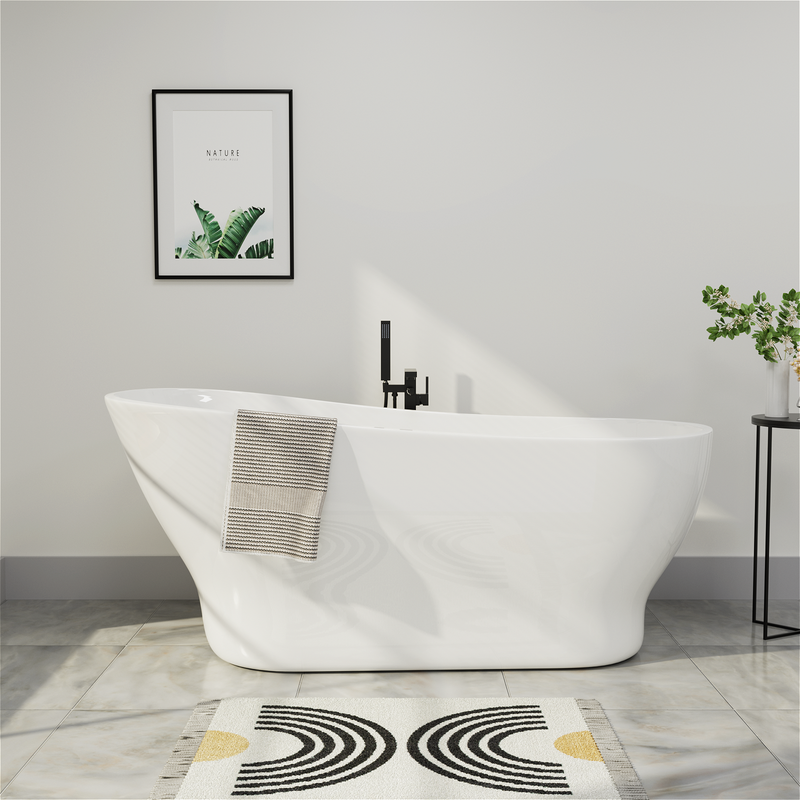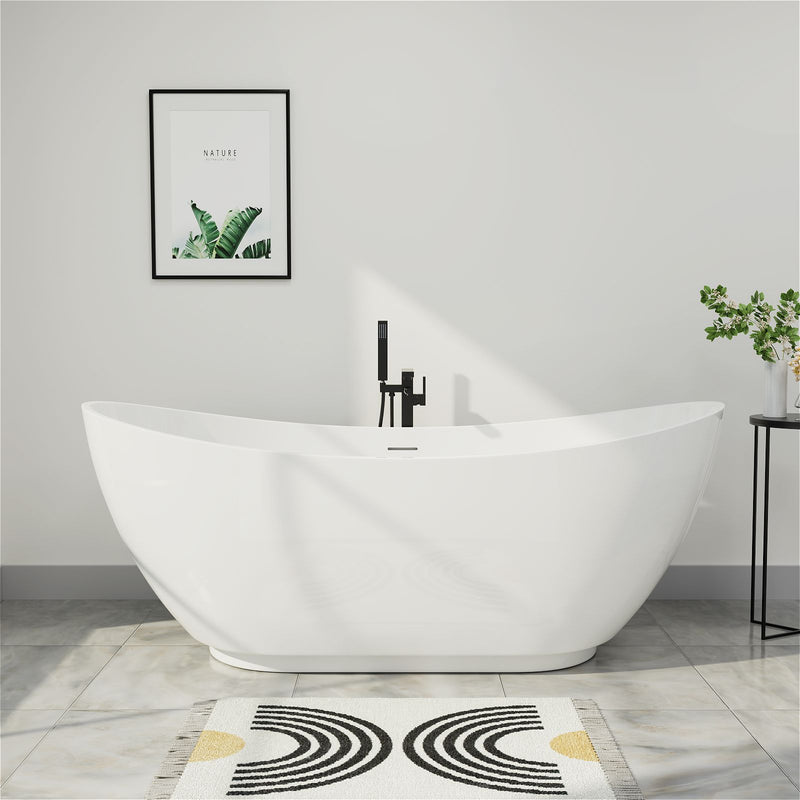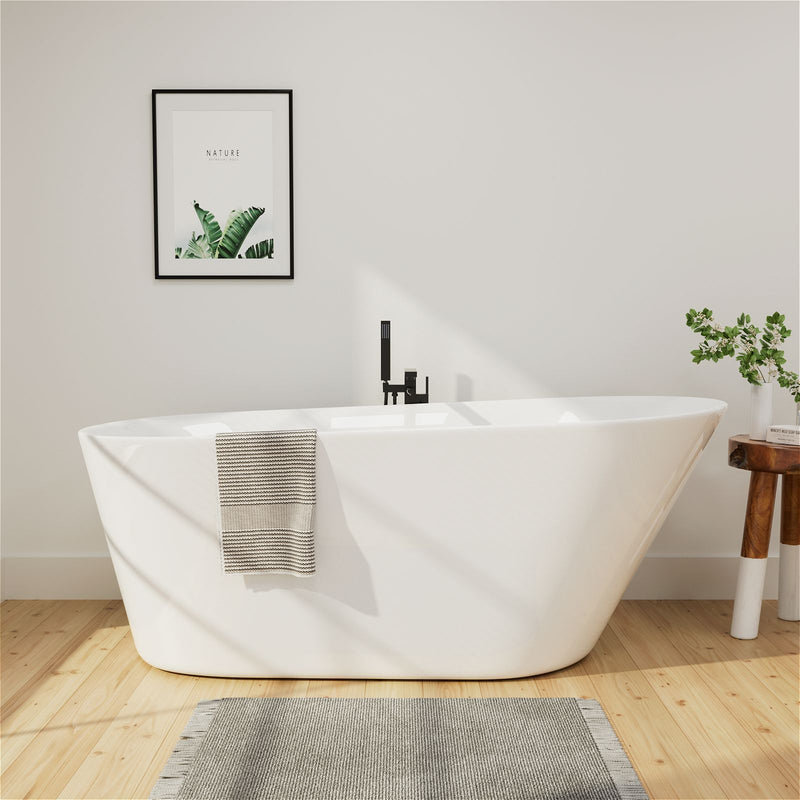Taking a bath is a small thing in life, but getting the water temperature right can be tricky. Water that is too hot can be uncomfortable or even dangerous, while water that is too cold can feel a bit chilly. So what is the ideal bath water temperature? Let's explore some tips to get the best water temperature.
What is the Best Bath Temperature?
What to Consider When Determining the Best Bath Temperature
The best bath temperature for you depends on a variety of factors, including your health, personal preferences, and the purpose of your bath. Here are some factors to consider:
Your Overall Health: If you have medical conditions such as high blood pressure or cardiovascular disease, it is recommended that you consult your healthcare professional to determine the safe bath temperature that best suits your specific needs.
The Purpose of Your Bath: You may take a bath to relax, soothe sore muscles, or refresh your mind. This means that you need to adjust the water temperature according to your needs to achieve the ideal effect.
Preference Differences: Everyone has different tolerance and preferences for temperature. Therefore, you may need to try different safe temperatures to find the one that suits you best.
Do you feel a little stiff and sore after a busy day at work? Does your skin feel dry? Or, do you want to firm your skin?
The temperature should not only be comfortable, but also safe. Here are some guidelines to help you choose the right bath temperature:
Cold Bath: Water temperature below 30°C (86 °F)
If you want a cool bath, choose water temperature below 30°C.
This will help soothe your skin and invigorate your senses.
Benefits of a Cold Bath
Replenishes and stimulates
Firms tissue (skin)
Reduces the effects of heat
This bath is best taken in the morning for a refreshed wake-up.
Warm Bath: Water temperature between 30°C and 37°C (86°F to 98.6°F)
Warm water has a stimulating effect on the body and increases the metabolic rate. Warm baths are great for people who are tired or have sore muscles because it relaxes the body.
Benefits of a Warm Bath
Relaxes and Soothes
Soothes the nervous system
Relieves muscle pain
This bath is best taken in the evening because it soothes your mind and prepares you for sleep!
These benefits are even greater if you turn up the water temperature and take a hot bath. A lukewarm bath is OK, but not optimal.
Hot Bath: 37°C (98.6 °F)
This is the best bath and the temperature we recommend.
A hot bath can calm your mind, improve circulation, detoxify, relax your muscles, help you sleep better, boost your immune system, and soothe your skin.
This is also the most effective way to inhale essential oils while bathing.
Very Hot Bath: Above 37°C (98.6°F)
If you want a hot, refreshing bath, choose a water temperature above 37°C. However, be gentle with your body when using this temperature, as overheated water can cause dehydration and inflammation of your organs. Avoid a bath that is too hot if you have sensitive skin, high blood pressure, heavy legs, or heart disease.
A hot bath is actually very similar to a sauna. The main difference is that a sauna uses dry heat, while a hot bath uses moist heat. Both will make you sweat and have the same benefits.
So, if you don't have a sauna at home, don't worry, a hot bath will do the trick! Still, be careful not to overdo it and drink enough water before and after your bath.
Benefits of a hot bath:
Removes toxins (sweating due to being warmer than body temperature)
Relieves muscle pain
Don't stay there for more than 10 minutes (you may experience discomfort: palpitations, suffocation sensation, etc.).
Tips to reach the ideal bath temperature
It takes some trial and error to reach the ideal bath temperature. Here are some tips to help you get the perfect bath experience:
Go step by step: Start with warm water and gradually add hot or cold water as needed. This approach allows you to find the optimal water temperature without any sudden shocks to your body.
Use a bath thermometer: Consider buying a bath thermometer to accurately measure the water temperature. This will help you maintain a regular bathing routine.
Experiment and observe: Keep track of how your body reacts to different temperatures. Pay attention to muscle activity and overall comfort during and after your bath to find the most comfortable temperature.
Adjust Your Bath Temperature According to the Weather and Seasons
As the seasons change, so do our preferences for bath water temperature. Here's how you can adapt:
Winter and cold weather: During the colder months, a warm bath is a great way to ward off the chill and create a cozy retreat. Try to go for the higher end of the recommended temperature range and feel the warmth seep into your bones.
Summer hot weather: When the temperatures rise, a cool bath is a relaxing oasis. Turn down the temperature a little to enjoy the cool sensation and beat the heat.
How Long Should You Stay in the Tub?
Once you're in your zen state, you might be tempted to stay half-submerged for longer. The best bath time recommended is 15 to 30 minutes. This is generally considered enough time to wash your hair and body (and, of course, relax!) without any adverse reactions.
In some cases, prolonged bathing can lead to dry skin, dehydration, overheating, and skin irritation. Always pay attention to your body's signals while bathing. If you start to feel dizzy, too hot, or uncomfortable, it's best to leave immediately.
If you're taking a therapeutic bath, you may need to soak for more than half an hour due to certain muscle or skin conditions. In this case, it's best to consult your healthcare professional for precise guidance.
Tips for safe bathing
It's important to remember that the recommended water temperature for bathing is between 37°C and 42°C (100°F and 108°F). It's also important to test the water temperature regularly in the tub and in various locations around the tub to ensure that the water temperature is consistent throughout the tub.
It's also important to note that children and older adults are more susceptible to burns, so when bathing them, it's important to keep the water temperature at or below 42°C (108°F). Also, avoid sudden temperature changes and keep your bathroom at a comfortable temperature to ensure that the water temperature remains within the recommended range.
Finally, it's important to remember that hot water can cause dehydration and dizziness or lightheadedness, so drink plenty of water before, during, and after a hot bath, and stop bathing immediately if you feel any of these symptoms.
FAQs
What are the benefits of bathing at a safe temperature?
Bathing at a safe temperature has benefits for both your body and mind. A warm bath can help relax tense muscles, reduce stress, and promote sleep. It also improves blood circulation and soothes dry, irritated skin. Additionally, bathing at a safe water temperature prevents the growth of bacteria, fungi, and other contaminants that can cause illness.
What happens if the water is too hot?
If the water is too hot, it can cause scalding or burns to the skin. It also increases the risk of dehydration and heat stroke, especially in children and the elderly. In addition, water that is too hot can cause breathing difficulties and dizziness. Finally, it increases the risk of bacteria and other contaminants growing in the water.
What can I do to ensure the water temperature is safe?
To ensure the water temperature is safe, always measure the water temperature with a bath thermometer before taking a bath. Additionally, you can install a temperature limiting device on your water heater to help keep the water temperature at a safe level. Finally, the water temperature should always be kept below 120 degrees Fahrenheit.
Are there any special considerations for infants or young children?
Yes, special care should be taken when bathing an infant or young child. The water temperature should be kept low, between 90 and 100 degrees Fahrenheit. This helps prevent scalding. Additionally, young children should always be supervised when bathing.
What other factors should you consider when bathing?
Other factors to consider when bathing include bath time and water level. It is generally recommended to limit bath time to 20 minutes or less. Additionally, water levels should be kept low to prevent accidental drowning. Lastly, it is also important to keep bathrooms and bathtubs clean to avoid the spread of germs and other contaminants.





